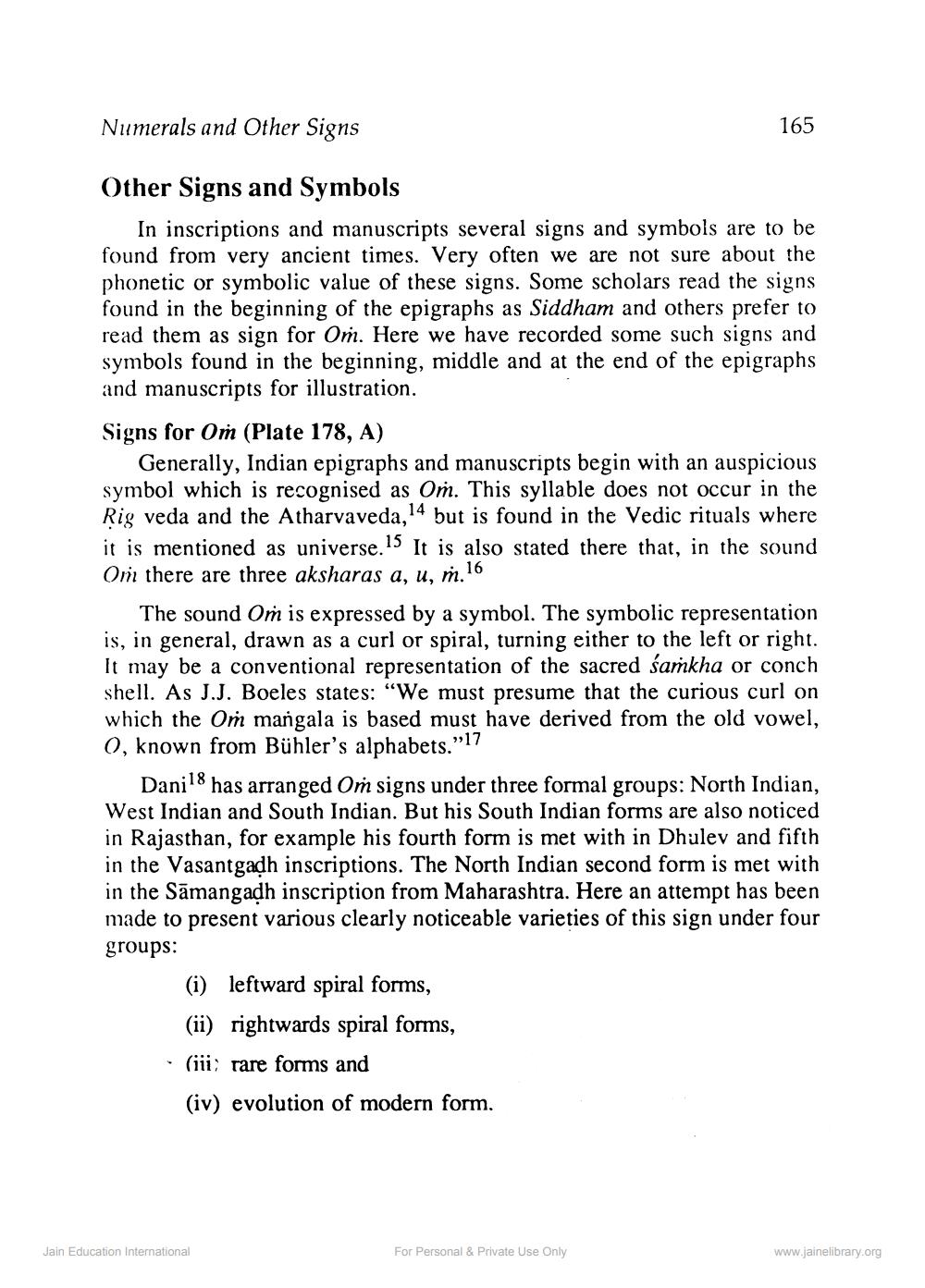________________
Numerals and Other Signs
165
Other Signs and Symbols
In inscriptions and manuscripts several signs and symbols are to be found from very ancient times. Very often we are not sure about the phonetic or symbolic value of these signs. Some scholars read the signs found in the beginning of the epigraphs as Siddham and others prefer to read them as sign for Om. Here we have recorded some such signs and symbols found in the beginning, middle and at the end of the epigraphs and manuscripts for illustration.
Signs for Om (Plate 178, A)
Generally, Indian epigraphs and manuscripts begin with an auspicious symbol which is recognised as Om. This syllable does not occur in the Rig veda and the Atharvaveda, 14 but is found in the Vedic rituals where it is mentioned as universe. 15 It is also stated there that, in the sound Om there are three aksharas a, u, m.16
The sound Om is expressed by a symbol. The symbolic representation is, in general, drawn as a curl or spiral, turning either to the left or right. It may be a conventional representation of the sacred saṁkha or conch shell. As J.J. Boeles states: “We must presume that the curious curl on which the Om mangala is based must have derived from the old vowel, 0, known from Bühler's alphabets."17
Danil 8 has arranged Oṁ signs under three formal groups: North Indian, West Indian and South Indian. But his South Indian forms are also noticed in Rajasthan, for example his fourth form is met with in Dhulev and fifth in the Vasantgadh inscriptions. The North Indian second form is met with in the Samangadh inscription from Maharashtra. Here an attempt has been made to present various clearly noticeable varieties of this sign under four groups:
(i) leftward spiral forms, (ii) rightwards spiral forms, (iiirare forms and (iv) evolution of modern form.
Jain Education International
For Personal & Private Use Only
www.jainelibrary.org




